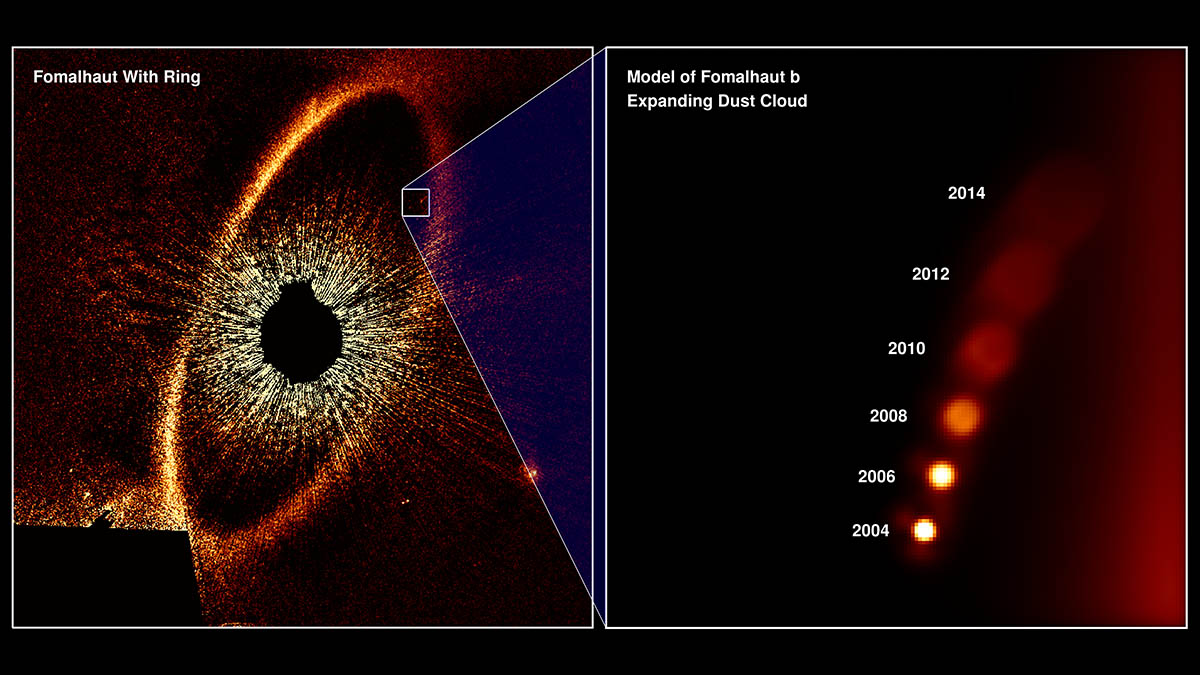This diagram simulates what astronomers, studying Hubble Space Telescope observations, taken over several years, consider evidence for the first-ever detection of the aftermath of a titanic planetary collision in another star system. The color-tinted Hubble image on the left is of a vast ring of icy debris encircling the star Fomalhaut, located 25 light-years away. The star is so brilliant that a black occulting disk is used to block out its glare so that the dust ring can be photographed. (NASA, ESA, and A. Gáspár and G. Rieke (University of Arizona))
Home This diagram simulates what astronomers, studying Hubble Space Telescope observations, taken over several years, consider evidence for the first-ever detection of the aftermath of a titanic planetary collision in another star system. The color-tinted Hubble image on the left is of a vast ring of icy debris encircling the star Fomalhaut, located 25 light-years away. The star is so brilliant that a black occulting disk is used to block out its glare so that the dust ring can be photographed. (NASA, ESA, and A. Gáspár and G. Rieke (University of Arizona)) This diagram simulates what astronomers, studying Hubble Space Telescope observations, taken over several years, consider evidence for the first-ever detection of the aftermath of a titanic planetary collision in another star system. The color-tinted Hubble image on the left is of a vast ring of icy debris encircling the star Fomalhaut, located 25 light-years away. The star is so brilliant that a black occulting disk is used to block out its glare so that the dust ring can be photographed. (NASA, ESA, and A. Gáspár and G. Rieke (University of Arizona))
This diagram simulates what astronomers, studying Hubble Space Telescope observations, taken over several years, consider evidence for the first-ever detection of the aftermath of a titanic planetary collision in another star system. The color-tinted Hubble image on the left is of a vast ring of icy debris encircling the star Fomalhaut, located 25 light-years away. The star is so brilliant that a black occulting disk is used to block out its glare so that the dust ring can be photographed. (NASA, ESA, and A. Gáspár and G. Rieke (University of Arizona))



